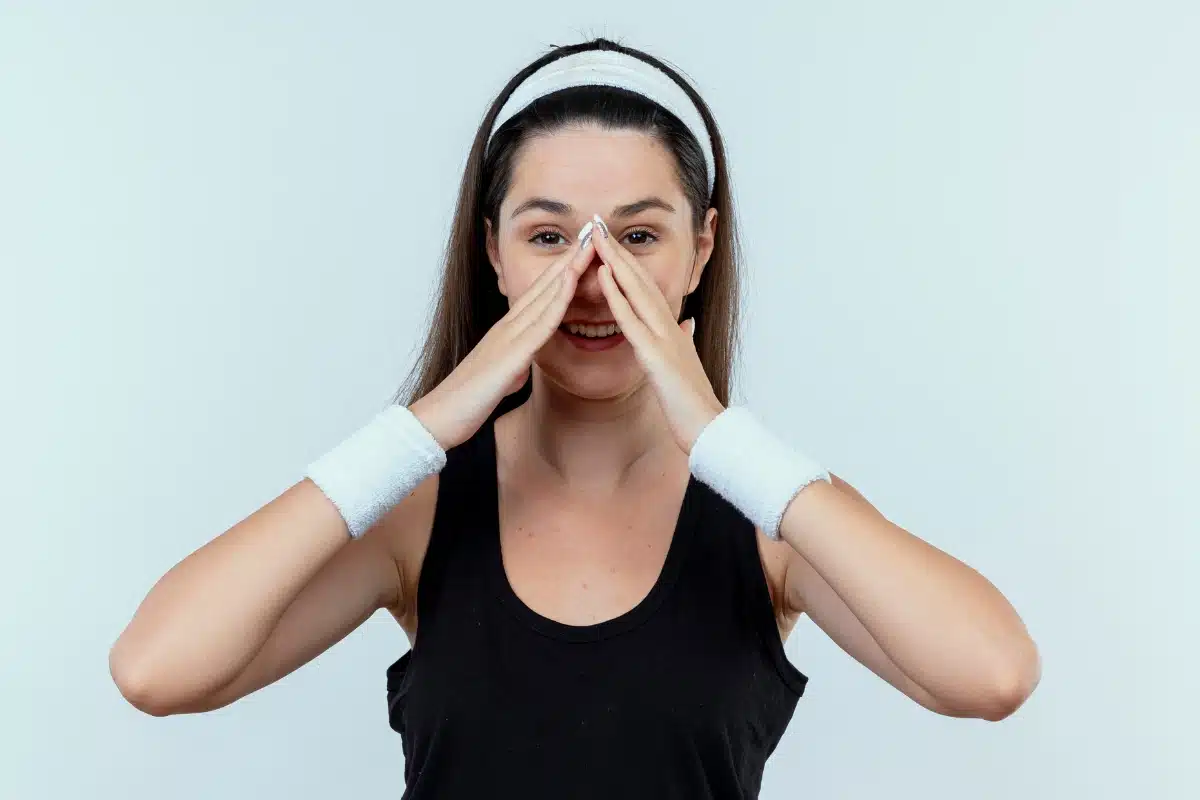Rhinoplasty, or nose job, is a surgery many choose to enhance the appearance of their nose, whether for size, shape, or symmetry. A short nose might be a consequence of an initial rhinoplasty, to address this, revision rhinoplasty is performed.
Dr. Andres Bustillo, a board-certified facial plastic surgeon with extensive experience, expertly guides patients through this process. His extensive experience and understanding of facial structures enable him to ensure results that are both natural-looking and harmonious with the patient’s facial features, from the initial consultation to post-surgery recovery.

Making a Short Nose Longer with Revision Rhinoplasty
- Revision rhinoplasty can correct a short nose by enhancing nasal structure to better match the patient’s facial features.
- The success of making a short nose longer relies on the surgeon’s expertise in rhinoplasty techniques.
- The procedure may include the use of grafts from the patient’s own body to achieve a natural-looking lengthening.
- Healing from revision rhinoplasty to lengthen a nose takes time, and patience is important for seeing the final results.
- Understanding the risks and having realistic expectations are key before undergoing revision rhinoplasty for a short nose.
About Short-Nose Rhinoplasty
Individuals with a short nose often encounter challenges due to a deficiency in cartilage, which affects nasal tip projection, an important aspect of both nasal function and appearance. The goal is to enhance the nasal structure for a balanced look that complements the face and improves breathing functions.
Short-nose rhinoplasty specifically addresses these issues by focusing on improving the nasal length to enhance the overall shape of the nose and creating harmony between the nose and the rest of the facial features.
Surgeons conduct this precise surgical procedure to achieve aesthetic symmetry and functional improvement.
Why Revision Rhinoplasty for a Short Nose Is Important
Revision rhinoplasty is important for those who have had an operation that resulted in a short nose, as it can improve their nasal appearance. It addresses both the look and the balance of facial features.

During the first meeting, the surgeon examines whether the patient is a good candidate for a revision based on their previous rhinoplasty. This evaluation includes discussing the patient’s primary rhinoplasty experience and assessing the nasal skin, which is critical to planning the follow-up procedure.
Initial Consultation and Assessment
Creating a surgical plan is a meticulous process, especially when it involves cartilage grafting following a previous rhinoplasty surgery. Here are key considerations when developing a surgical strategy:
Source of Cartilage:
- Identify a reliable source of cartilage that provides the structural support needed as well as meets the aesthetic goals.
- Preferably, harvestable septal cartilage is utilized as it typically offers a sufficient amount of resilient cartilage for grafting.
- In the absence of septal cartilage, alternative sources such as ear or rib cartilage are considered.
Balancing Needs: The cartilage grafting option selected should effectively balance the restoration of nasal function with the patient’s aesthetic objectives.
The plan aims to improve both the appearance and function of the nose, ensuring they are in harmony. The plan ultimately aims to enhance the nose’s appearance and function, ensuring they are in harmony.
Before your rhinoplasty procedure, it’s important to have a stable nasal base support. This step is key for a good structural outcome and meeting your expectations for appearance. Follow the instructions provided by your surgeon to create the optimal conditions for the surgery.
Developing a Surgical Plan

Revision rhinoplasty often involves advanced techniques to repair and reshape the nasal structure. The procedure typically includes the use of cartilage from various parts of the patient’s own body:
- Nasal Tip Skin: For refining the contours, surgeons may use:
- Septal cartilage: Offers structural support and is often readily available.
- Ear cartilages: Including auricular cartilage and conchal cartilage, are options for smaller adjustments.
Major Reconstructions: When more significant alterations are needed:
- Costal cartilage (rib cartilage): This is used when previous surgeries have depleted the nasal cartilage.
- Rib cartilage graft: A larger piece can be shaped and placed as needed.
- Strips of cartilage: These are sometimes preferred for septal extension grafts.
- Allograft Cartilage: This alternative source of cartilage can be incorporated with different grafting techniques.
The positioning of these grafts is crucial, with each septal extension graft needing careful placement to ensure a harmonious nasal tip region. The use of a properly contoured rib cartilage graft is important for achieving a natural and aesthetically pleasing outcome. Through revision rhinoplasty, the nasal structure can be significantly improved, enhancing both appearance and functionality.
The Revision Rhinoplasty Procedure
After revision rhinoplasty surgery, following detailed postoperative care instructions is crucial to prevent common rhinoplasty complications. A rhinoplasty patient typically undergoes a recovery period that unfolds over several weeks, characterized by:
- Adhering to activity limitations.
- Attending follow-up appointments to track the healing process.
- Ensuring results develop as intended.
Postoperative Care and Recovery
Additional Advice and Precautions
- Managing expectations: It’s crucial to mentally prepare for potential changes that may arise during the healing period after revision rhinoplasty.
- Nose deformity: One specific nose deformity to be aware of is saddle nose deformities, which may become noticeable as you recover.
Anticipating these outcomes helps ensure a realistic outlook and contributes to overall satisfaction with the surgical results.
Revision Rhinoplasty Outcomes
Revision rhinoplasty often results in the satisfactory lengthening of a short nose, contributing to a more balanced facial appearance. The procedure, a form of nasal reconstruction, is designed to improve both the aesthetic aspect and functionality of the nose.
If you’re thinking about getting a second nose job, especially for a short nose, it’s really important to talk to an expert. Dr. Andres Bustillo is a certified plastic surgeon with over 20 years of focus on face surgeries. Dr. Bustillo is also dedicated to making sure his patients get the best results, which is clear from his work in his own practice and his volunteer efforts.
If you need someone really skilled in fixing up noses again, meeting with Dr. Bustillo is the best choice. With his strong background and a record of happy patients and successful surgeries, he stands out as a top option for anyone wanting to improve the look of a short nose.

